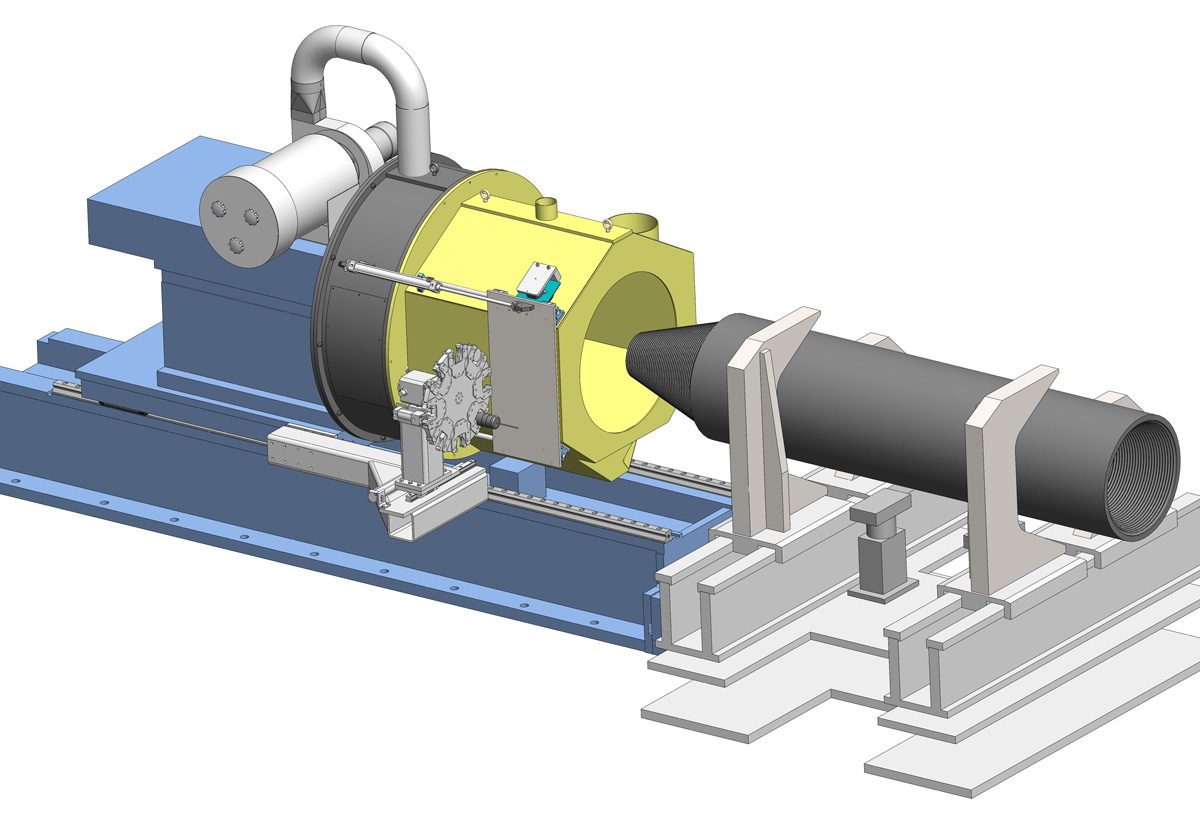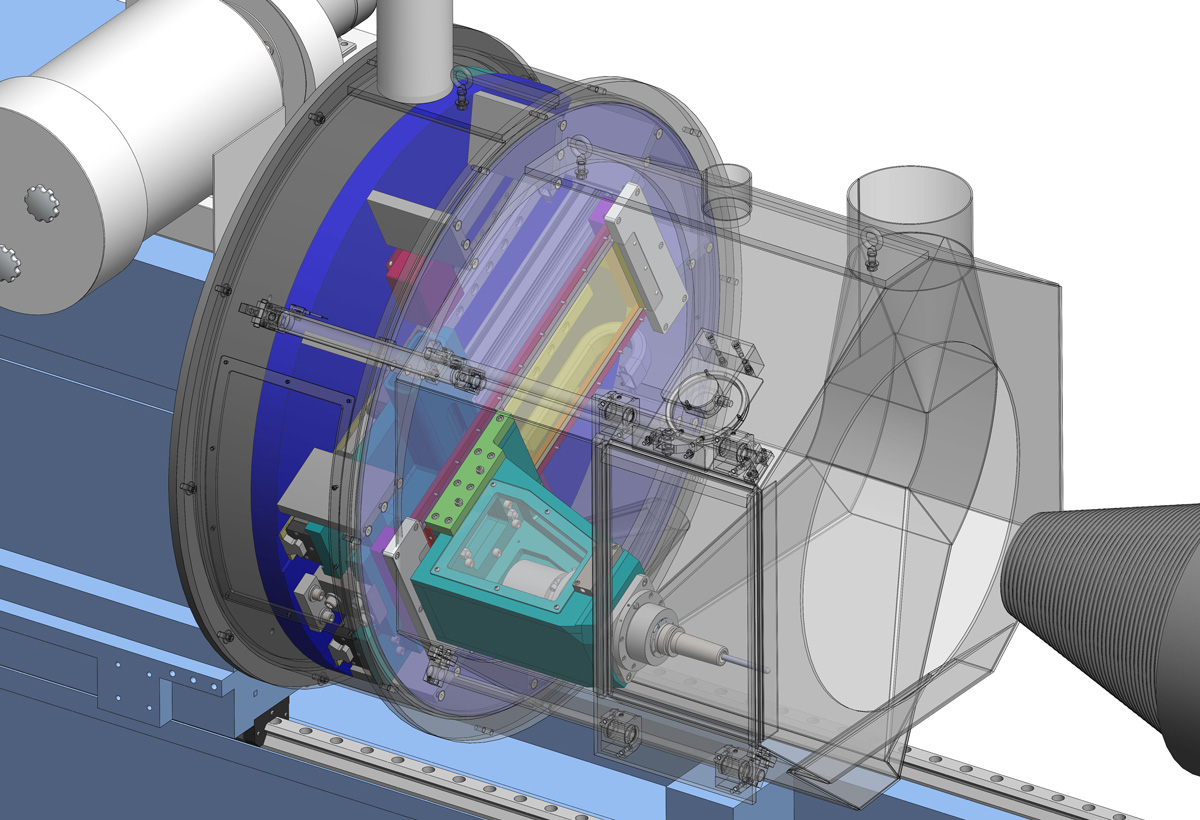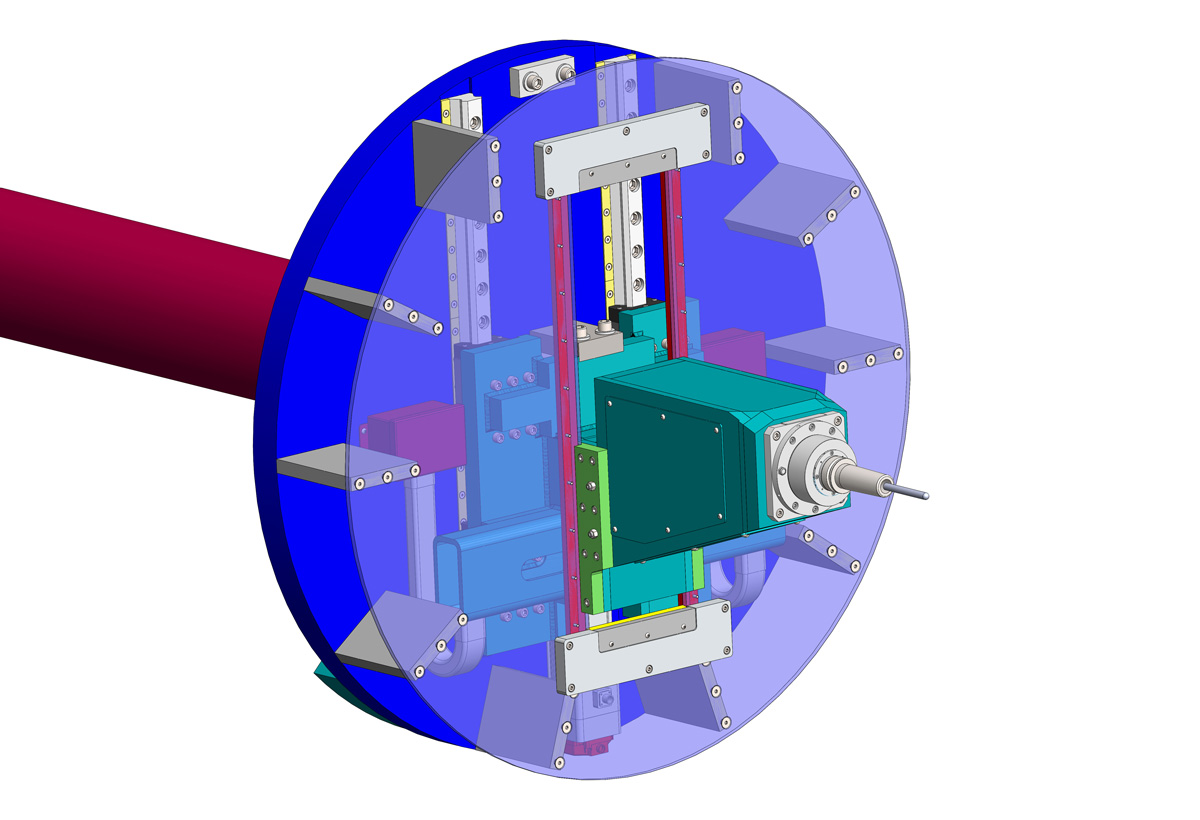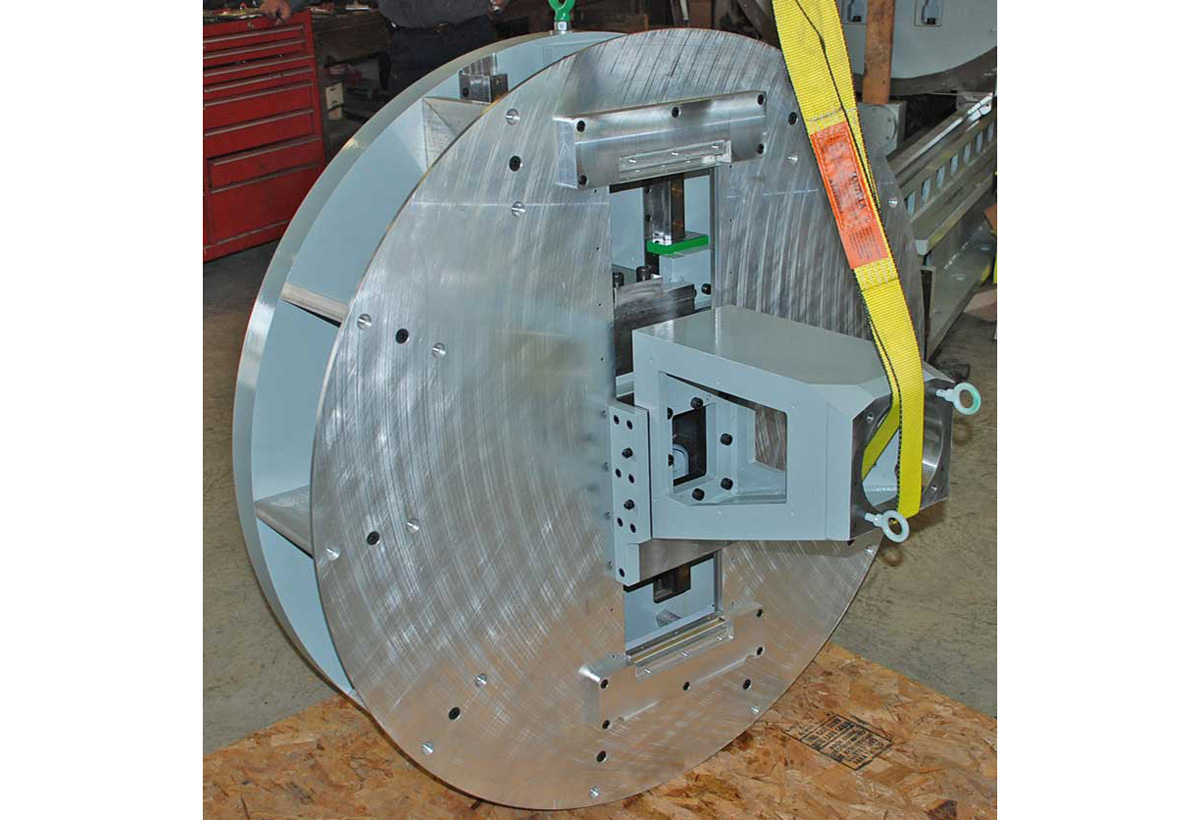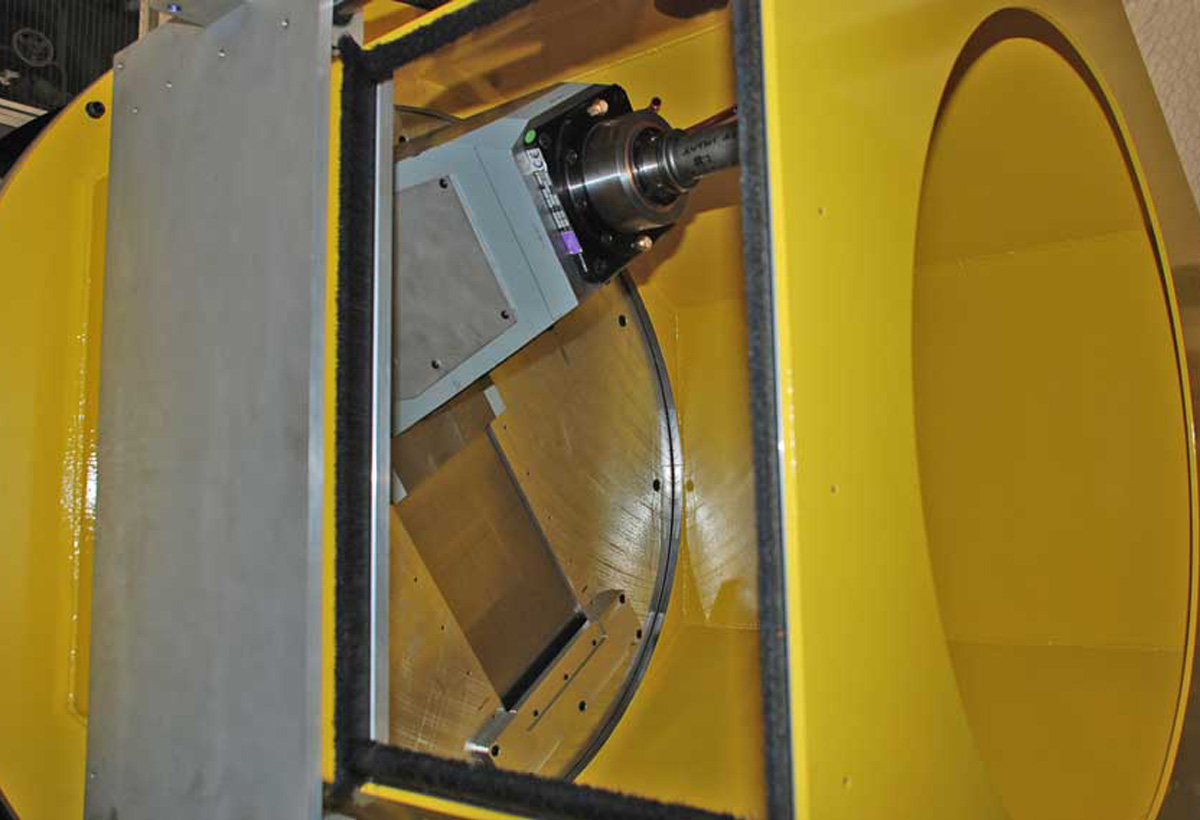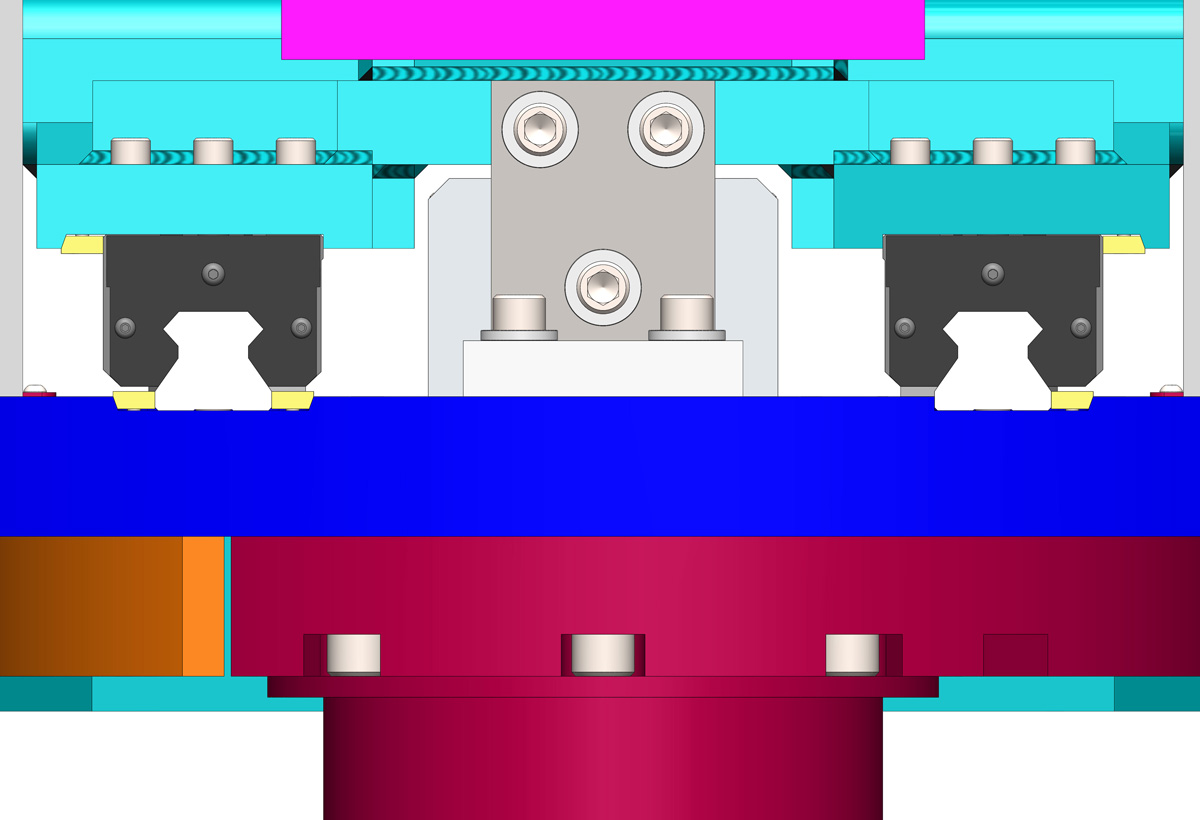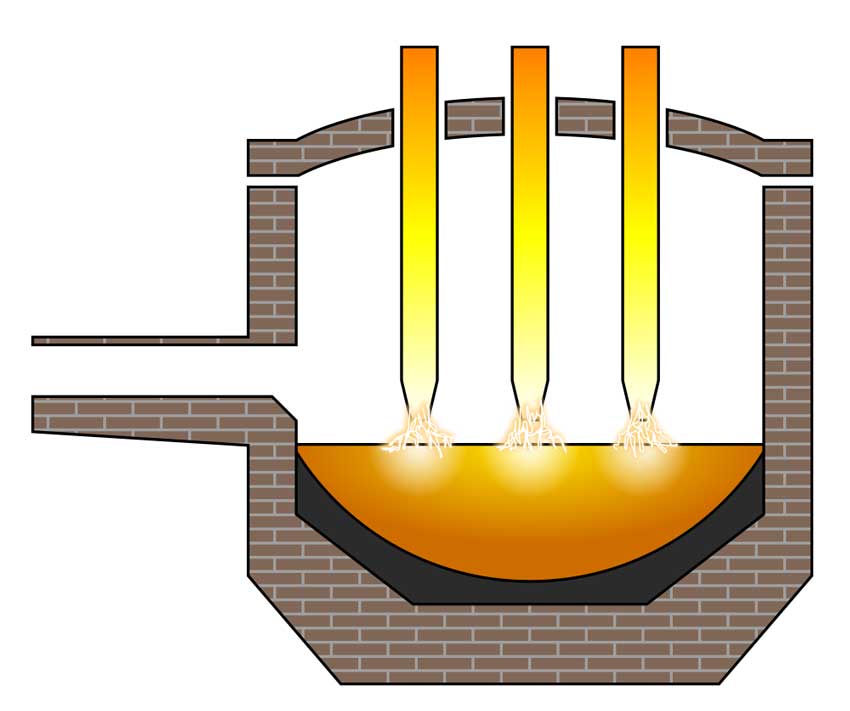Electrode Threading Machine
This machine mills tapered threads in the ends of graphite electrodes used to fire large electric arc furnaces for making steel. Three electrodes are fed into the top of a furnace, and energized with tremendous amounts of current to create arcing between the electrodes and the material being heated, which is typically steel scrap loaded in the bottom of the furnace. As the exposed bottom ends of the electrodes erode from the continuous arcing, sections are automatically screwed onto the top to form continuous rods. The coupling mechanism rotates new sections a precise amount which causes the threads to engage and lock. The threads must be machined accurately so that the sections “bottom out” during the coupling process, since incorrectly machined threads can cause breakage, or compromise the electrical characteristics of the electrode.
The customer had been having trouble with their previous machines primarily in areas of reliability and evacuation of chips out of the cutting area. The reliability issue had been caused by extremely fine graphite dust generated while cutting becoming embedded in the X-axis drive system. Our solution was to make the X-axis with a pressurized chamber to keep cutting dust away from these components. In order to seal the rear chamber, we re-designed the X-axis by changing the rotating mounting plate from rectangular to round.
The round X-axis made it possible to design a close fit between the front rotating plate and the rear cover, which essentially formed a simple non-contact labyrinth seal. By slightly pressurizing the rear chamber with clean filtered air it eliminated the chance for cutting dust to get inside and damage the components. The new design was so successful that after the machine had operated for several weeks, no black dust was found inside the rear compartment by checking the surfaces with a white cloth.
Since this was a retrofit of an existing machine, there were space limitations on how steep the walls of the chip enclosure could be made. The customer provided the minimum angle required for the chips to gravity flow, and we were able to maintain that angle and still fit within the constraints of the existing design. We were also careful to minimize flat surfaces inside the enclosure where dust could possibly collect.
Electric Arc Furnaces
A typical alternating current furnace is powered by a three-phase electrical supply and therefore has three electrodes. Electrodes are round in section, and typically in segments with threaded couplings, so that as the electrodes wear, new segments can be added. The arc forms between the charged material and the electrode, the charge is heated both by current passing through the charge and by the radiant energy evolved by the arc. The electrodes are automatically raised and lowered by a positioning system, which may use either electric winch hoists or hydraulic cylinders.
Source: Wikipedia – Electric arc furnace

